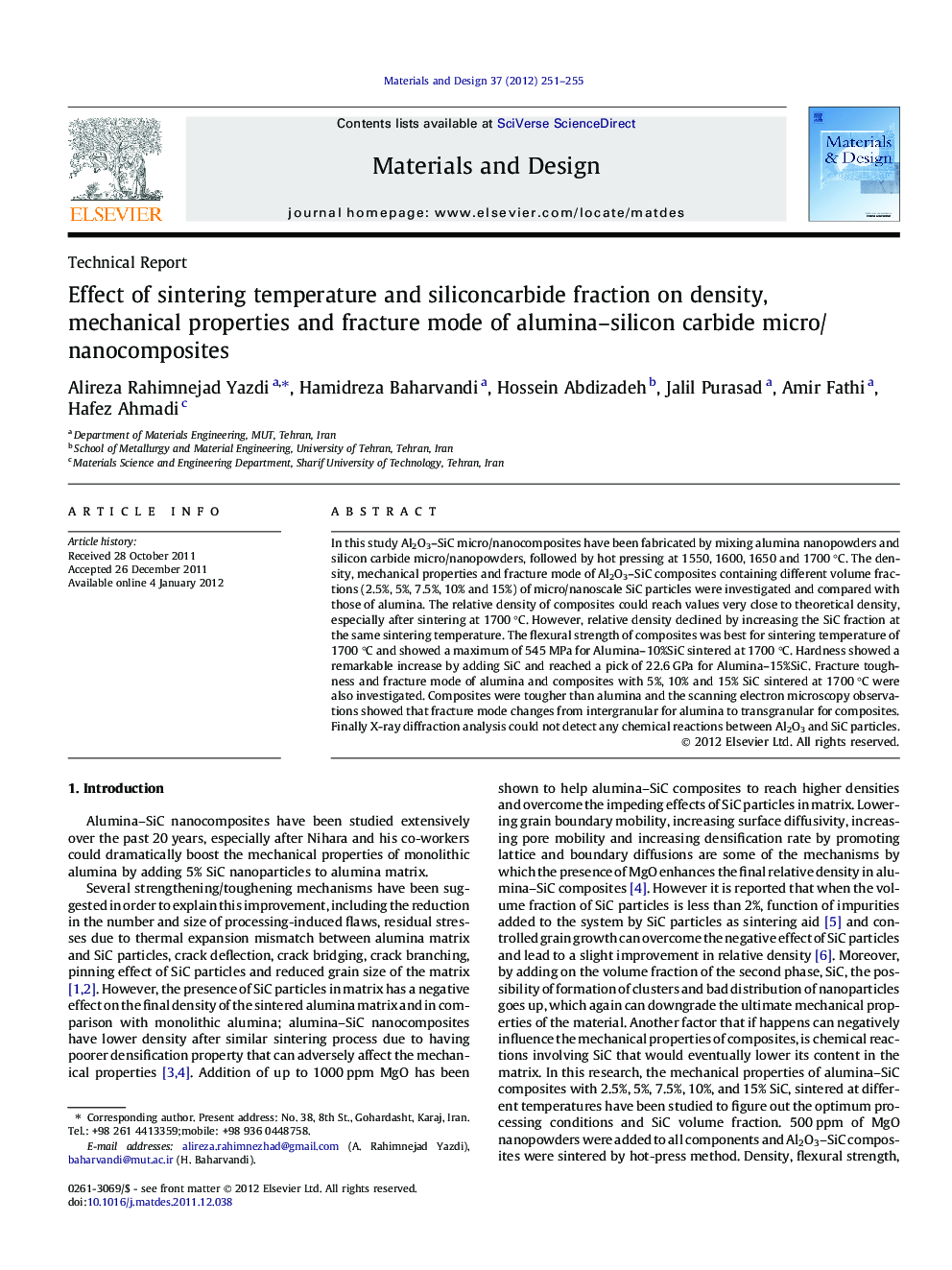| Article ID | Journal | Published Year | Pages | File Type |
|---|---|---|---|---|
| 830760 | Materials & Design (1980-2015) | 2012 | 5 Pages |
In this study Al2O3–SiC micro/nanocomposites have been fabricated by mixing alumina nanopowders and silicon carbide micro/nanopowders, followed by hot pressing at 1550, 1600, 1650 and 1700 °C. The density, mechanical properties and fracture mode of Al2O3–SiC composites containing different volume fractions (2.5%, 5%, 7.5%, 10% and 15%) of micro/nanoscale SiC particles were investigated and compared with those of alumina. The relative density of composites could reach values very close to theoretical density, especially after sintering at 1700 °C. However, relative density declined by increasing the SiC fraction at the same sintering temperature. The flexural strength of composites was best for sintering temperature of 1700 °C and showed a maximum of 545 MPa for Alumina–10%SiC sintered at 1700 °C. Hardness showed a remarkable increase by adding SiC and reached a pick of 22.6 GPa for Alumina–15%SiC. Fracture toughness and fracture mode of alumina and composites with 5%, 10% and 15% SiC sintered at 1700 °C were also investigated. Composites were tougher than alumina and the scanning electron microscopy observations showed that fracture mode changes from intergranular for alumina to transgranular for composites. Finally X-ray diffraction analysis could not detect any chemical reactions between Al2O3 and SiC particles.
► Decline in density by increasing the SiC% reached a plateau at 1600 °C. ► Flexural strength of composites at 1650 and 1700 °C kept rising by SiC% up to 10%. ► The Vickers hardness of composites was improved up to 22.6 GPa for Al2O3–15% SiC. ► Fracture toughness was increased from 3.3 to 5.3 MPa √m for Al2O3–10% SiC. ► Fracture modes of Al2O3 is intergranular but it changes to transgranular in composites.
